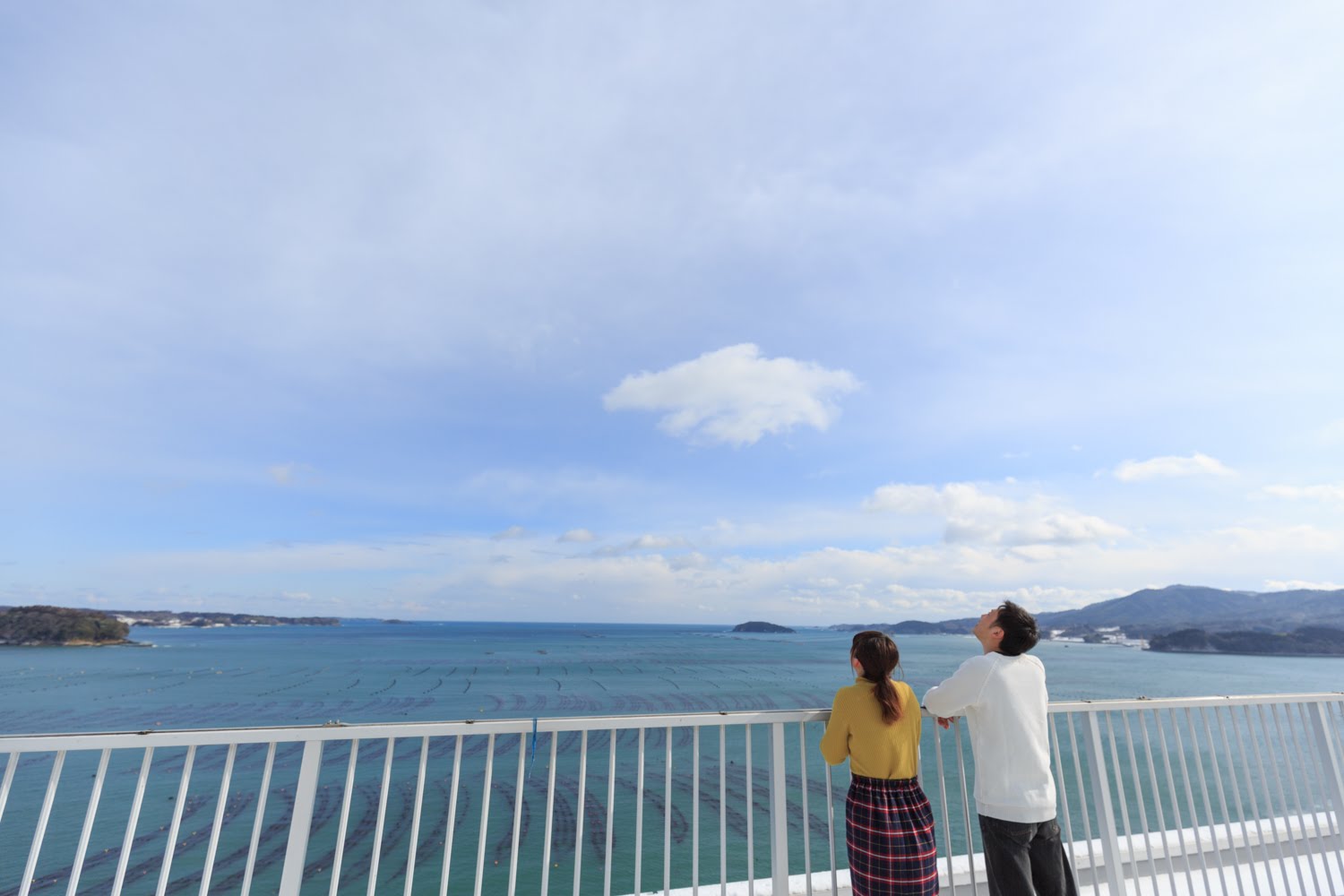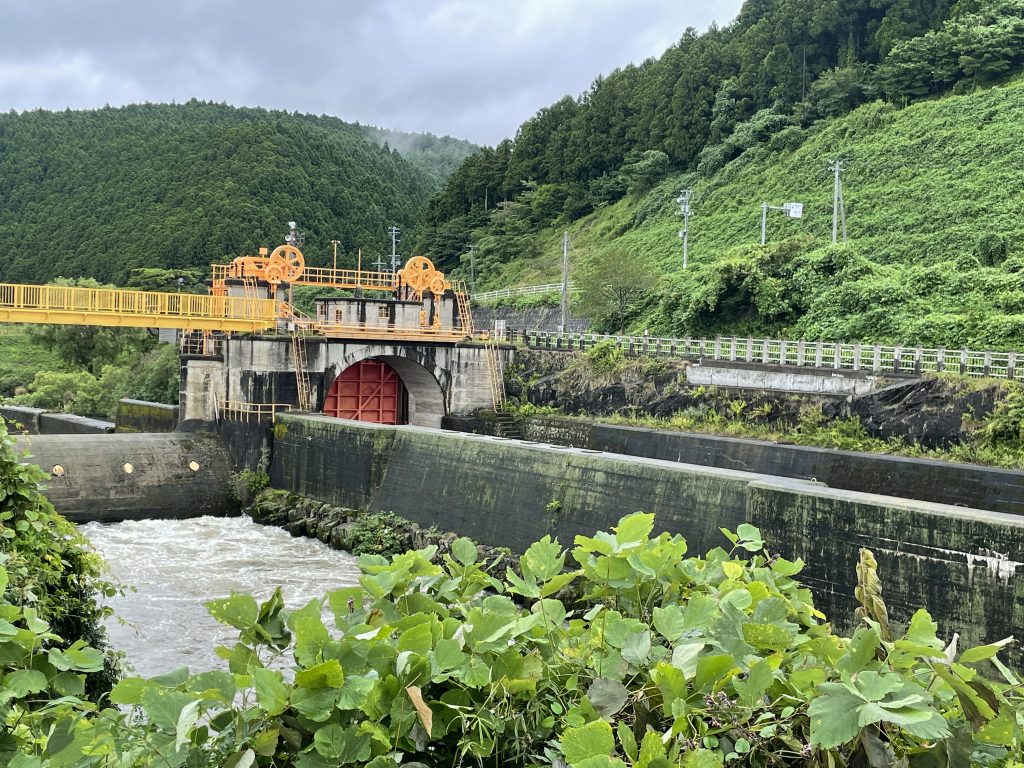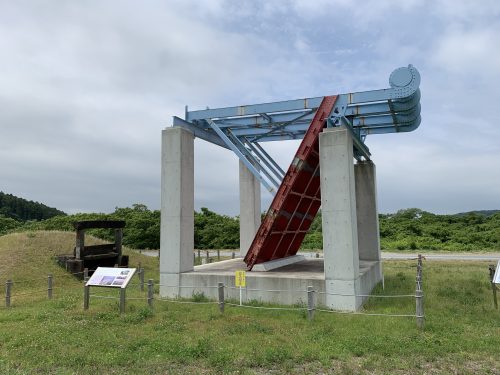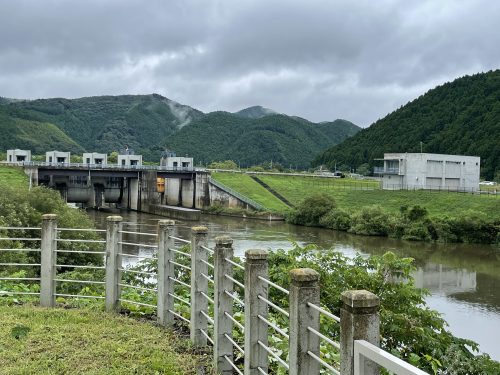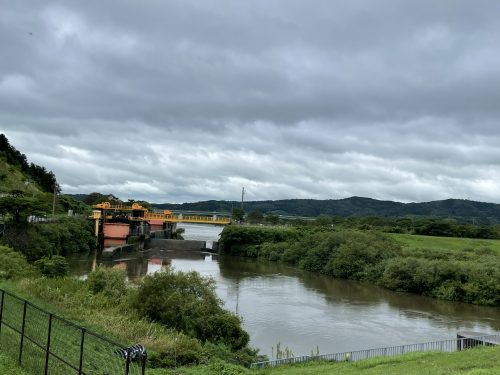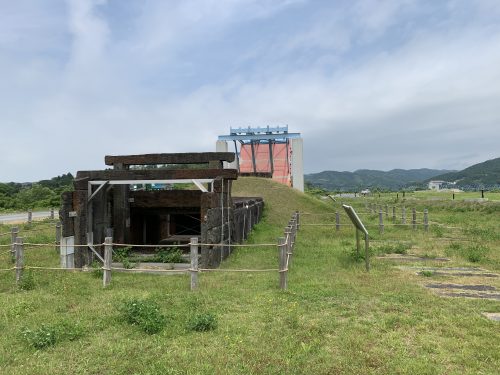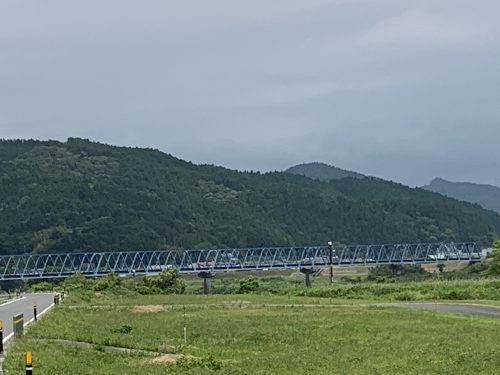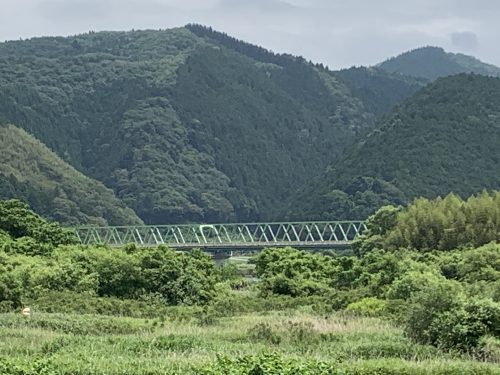This time, I would like to introduce a historical park set up in a sandbar at the point where the Kitakami River and the former Kitakami River branch off.
Located on the border between Tome City and Ishinomaki City, this park is located in an artificial sandbar where the Kitakami River and the former Kitakami River branch off, and you can learn about the history of hydraulic control of the Kitakami River.
At the diversion point of the Kitakami River and the former Kitakami River, two sets of old and new wash dams and floodgates, which are separated by more than 70 years at the time of construction, coexist.
In August and September of 1897, a large flood occurred nationwide. The same applies to the Kitakami River basin. Government decided to drain most of the water from the Kitakami River to Oppa Bay via the widened Oppa River. This is the new Kitakami River.
As a result, the amount of water in the former Kitakami River can be adjusted at the former Kitakami River diversion facility. A 762m closing levee was built between the Tokinami-washing weir and the Wakiya-washing weir. This deadline is the current Kitakamigawa River Historical Park. The Tokinami closing levee and Wakiya lock were completed in 1945, the Tokinami and Wakiya locks were completed in 1945, and the Tokinami and Wakiya locks were built later.
The JR East / Kesen-Numa Line railroad tracks and railway bridges run on the north side, the Sanriku Expressway and its bridges on the west side, Prefectural Road 61 on the south side, and National Road 342 on the east side.
An observatory overlooking the entire park is set up, and on the north side you can see the state of the Tokinami wash weir, and on the south side you can see the historical buildings such as the Wakiya wash weir and lock gate.
[ About 20 minutes drive from our hotel ]
Good day ! from Minhong
Book us at;
” Kanyo channel “ is being delivered ….
Please “like(いいね!)” and subscribe to the channel.
